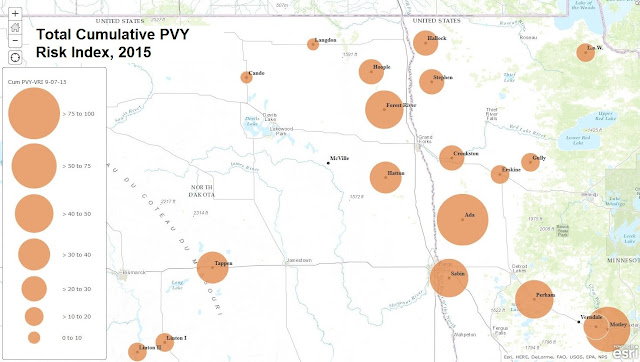Greetings!
Only 4 traps reporting again this week, Erskine, Hoople, Lake of the Woods and Tappen. There were no aphid vectors in any of them. Consequently, the PVY Vector Risk Index Values have not changed from last week. The number of mosquitoes in the traps was a bit depressing, even for someone living in northern Minnesota!
Most fields are done, so I suspect there isn't much green left out there. In case there are a few fields left with live vines....
The First map represents the current cumulative PVY Vector Risk Index values up to Sept 09, 2016. The Second represents the cumulative seasonal PVY Vector Risk Index values from 2015.
Aphid Alert Trap Catch Identified Sept 05-09
Seasonal Aphid Trap Catches to Sept 09, 2016



